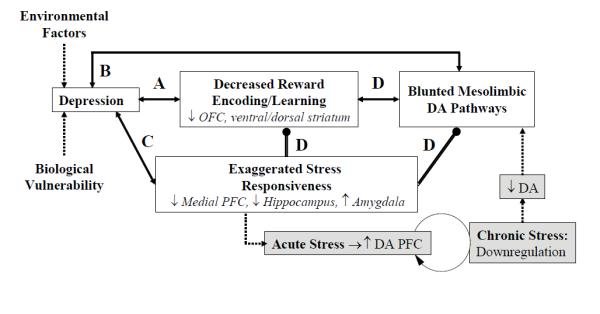Figure 1.

Schematic illustration of the heuristic model proposed in the current review. Double-ended arrows denote associations (no causality) between processes. Double lines with dots denote directional inhibitory links (e.g., stress response inhibits mesolimbic DA release). Dotted lines denote causal relations, and the gray boxes denote hypothesized mechanisms (e.g., chronic stress leads to lower DA release and eventually to blunted DA response). The circular arrow denotes long-term DA down-regulation with chronic stress. Letters (A-D) refer to the sections in the text. ↓: decreased, ↑: increased, NAc: nucleus accumbens, PFC: prefrontal cortex. For the sake of simplicity of the illustration, both environmental factors and biological vulnerability are graphically represented as contributing to the clinical syndrome directly; both factors likely affect, however, all of the sub-components of this heuristic model (e.g., decreased reward responsiveness, exaggerated stress responsiveness, blunted mesolimbic DA).
